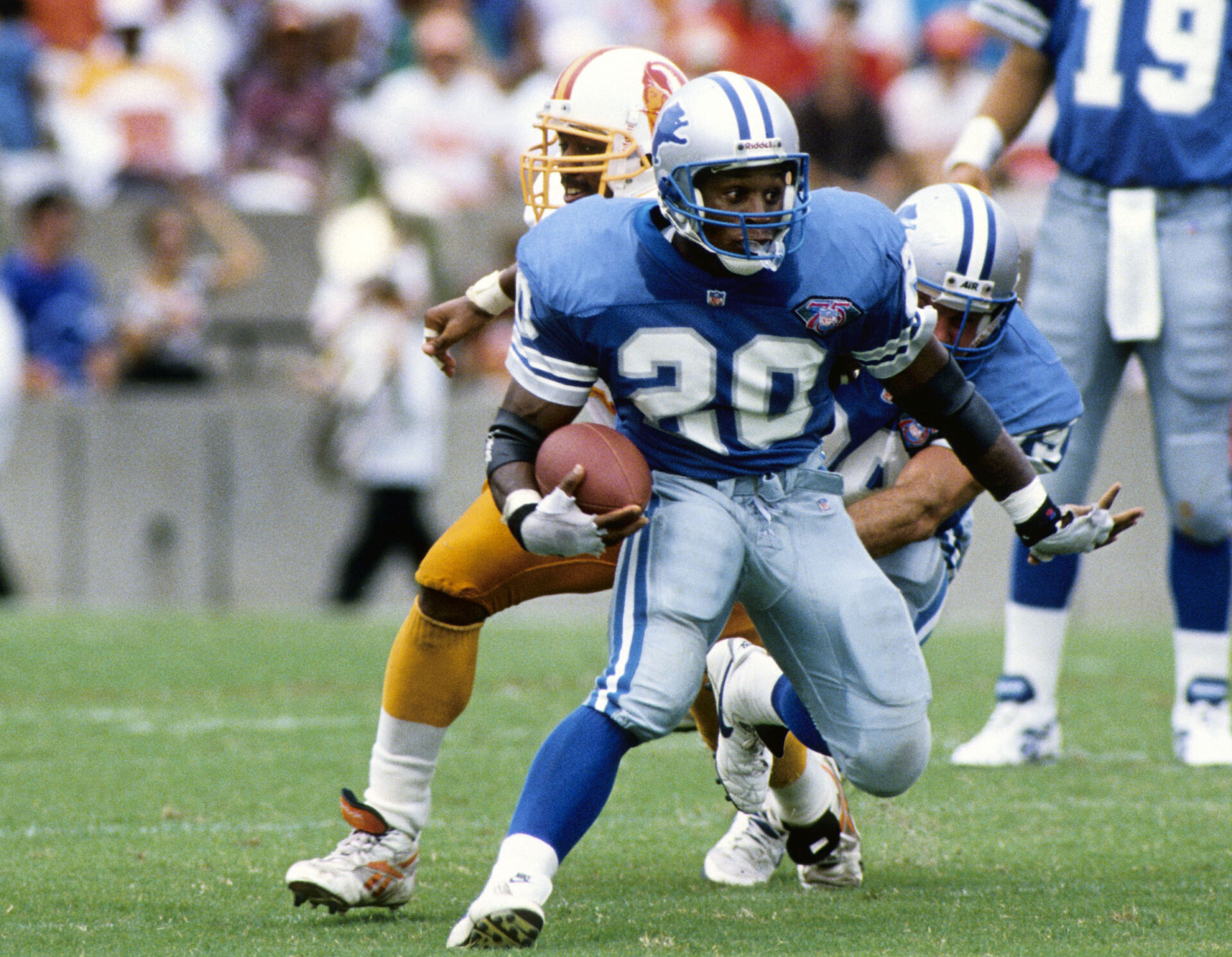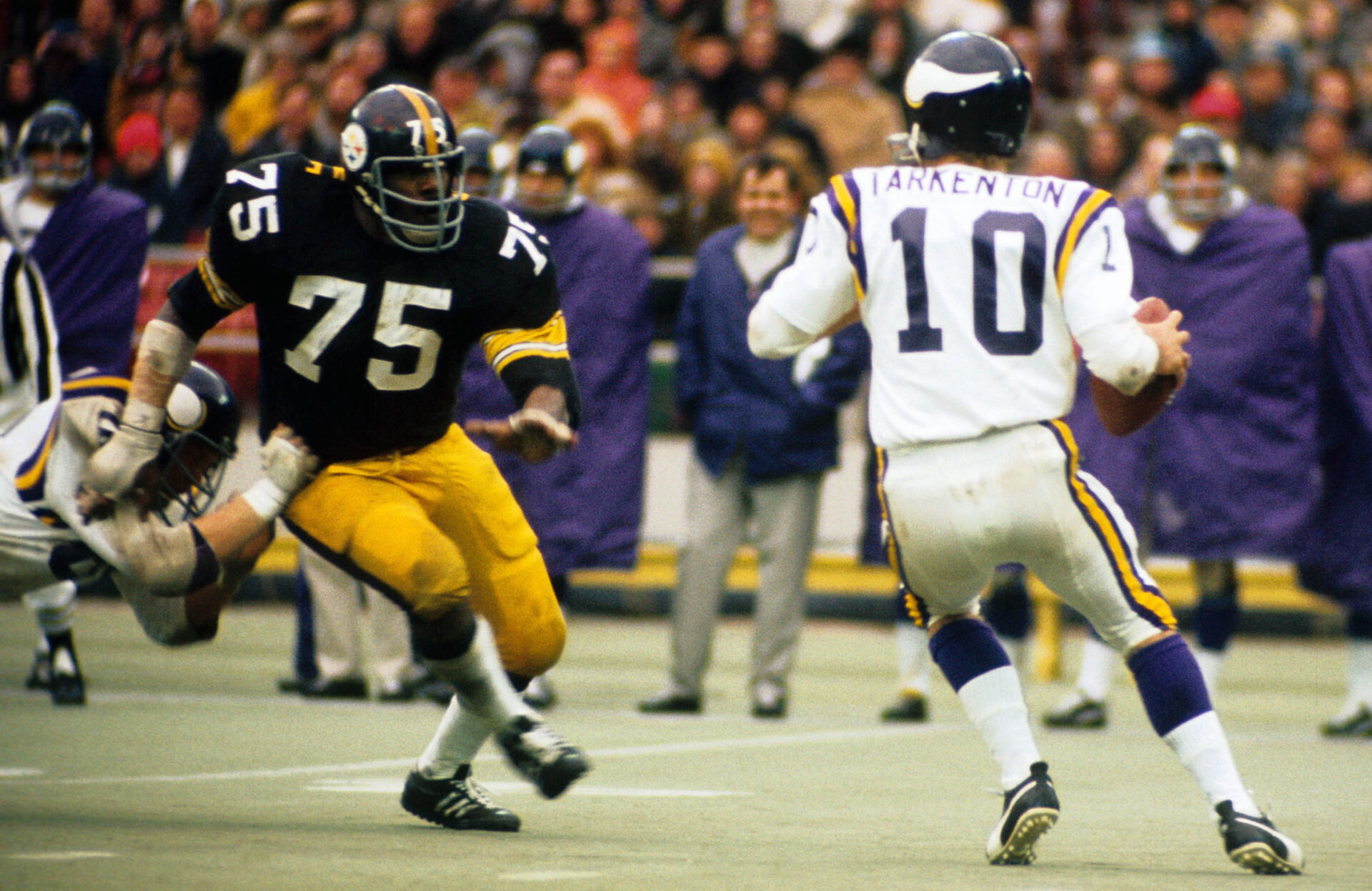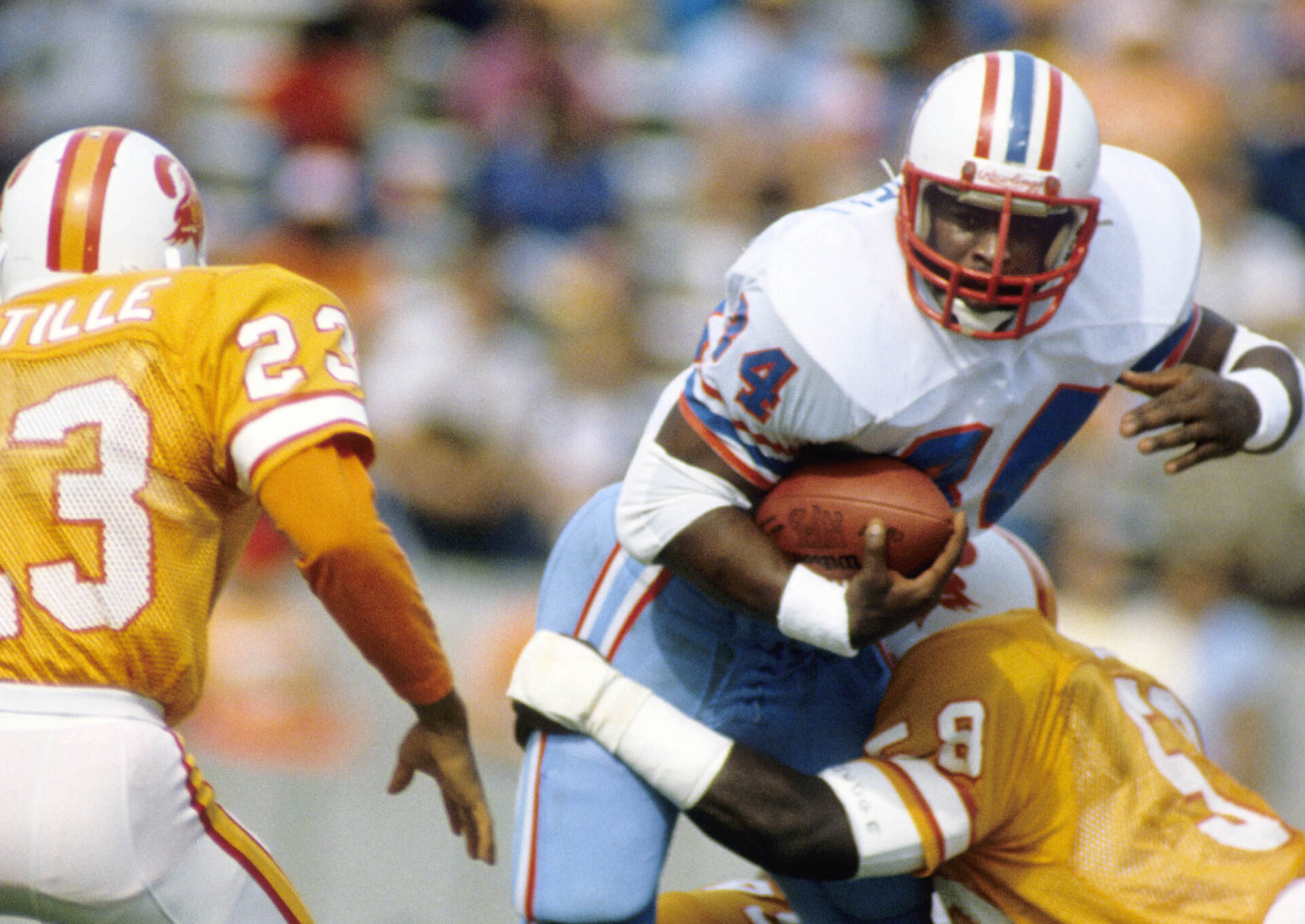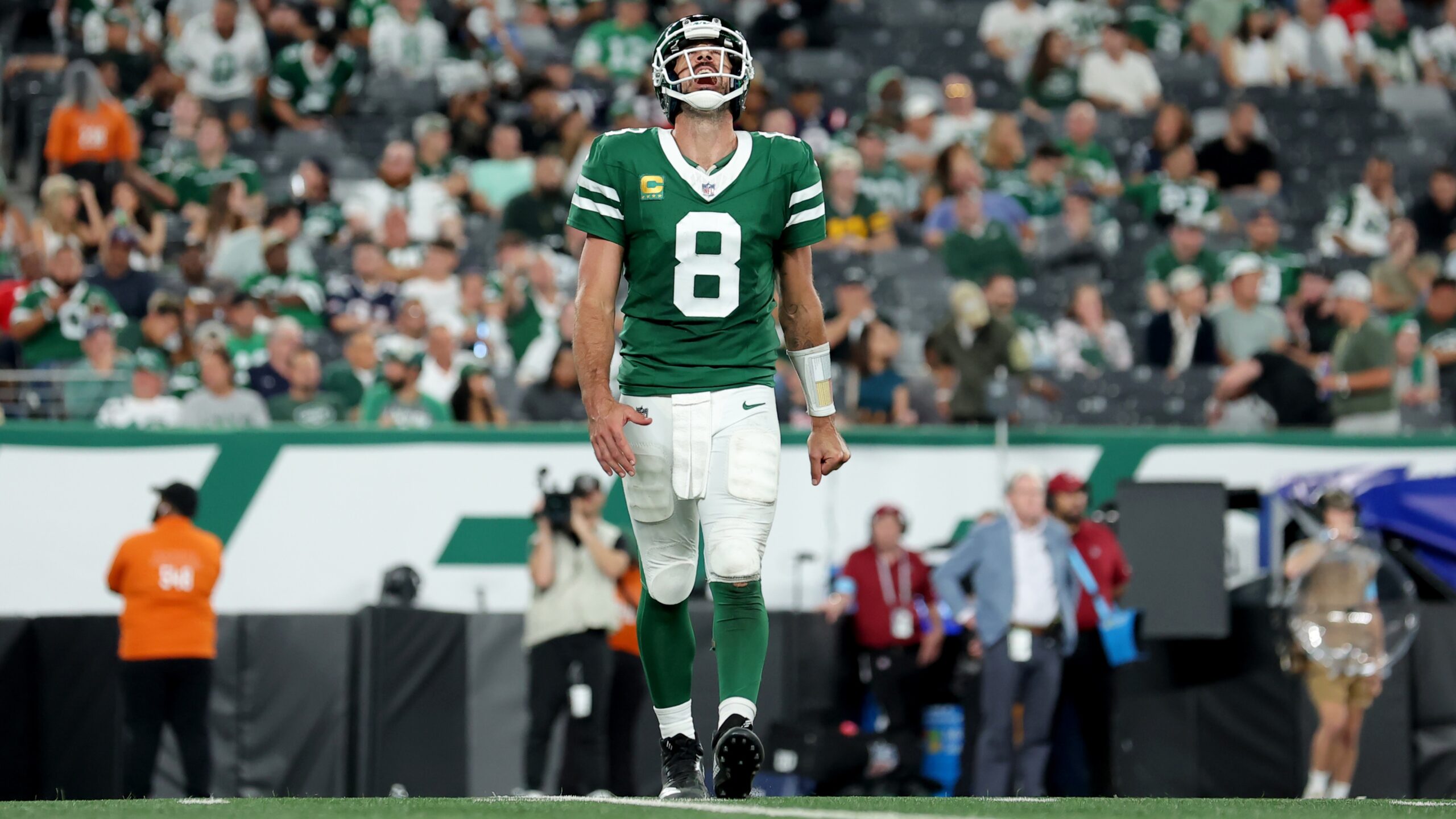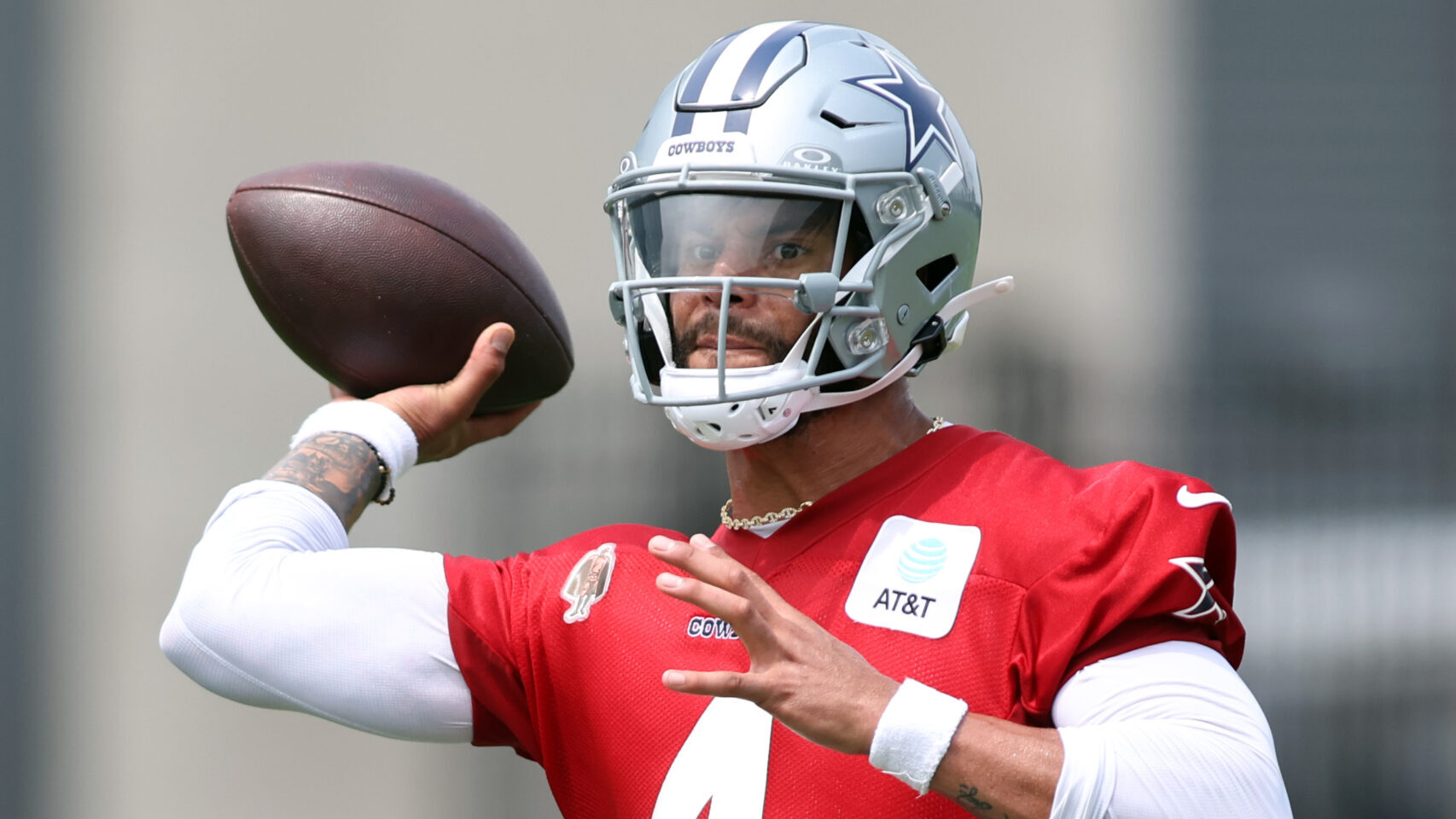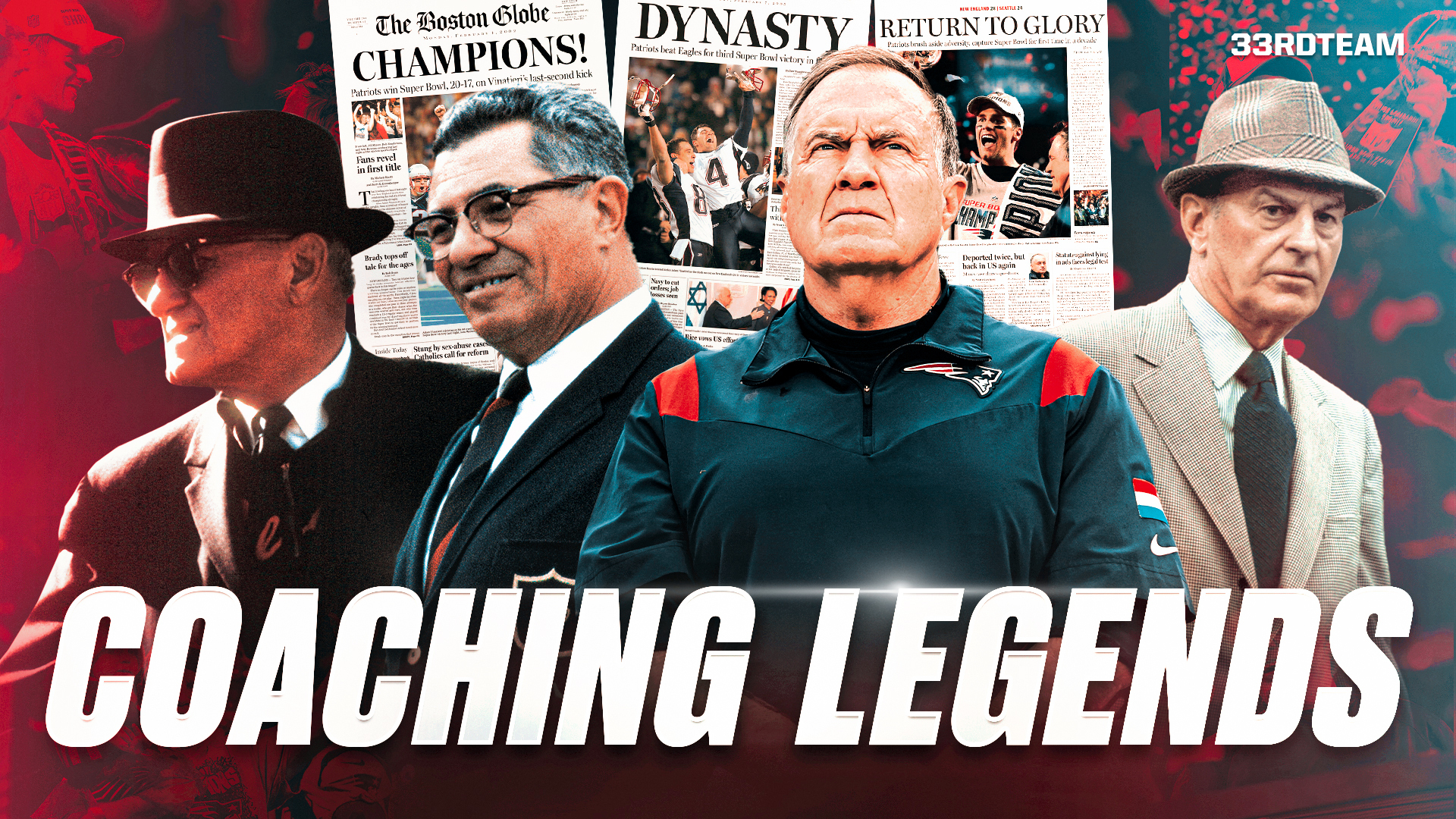Analysis
7/13/23
21 min read
Consummate Canton: Each NFL Team's Best Hall Of Famer

There are dozens of words and phrases utilized to describe Hall of Famers. Elite. Great. Game-changing. Even the vastly overused G.O.A.T.
What about the best of the best, the very top echelon of Gold Jackets? While I recognize the massive contributions by the likes of George Halas in Chicago, Paul Brown in Cleveland and Cincinnati, Vince Lombardi in Green Bay and Pete Rozelle in, well, everywhere, as the hands-down No. 1 commissioner in pro sports history, this article will focus on players only.
>>LOCKS FOR CANTON: Retired Players | Current Coaches | Current Players
The 33rd Team evaluated every Canton enshrinee from the franchises that have had at least one — the Houston Texans are not included because no one has made it yet.
So, the ceilings are exceedingly high and so is the ground floor. Consider that some of the all-time superb players in the history of pro football, particularly with such tradition-rich and trophy-loaded teams as the Pittsburgh Steelers, Chicago Bears and Green Bay Packers, won’t be at the top of our list.
Here goes with the requirement that a player made his biggest impact with the particular franchise.
Each Team's Best Hall Of Famer
 Arizona/Chicago/St. Louis Cardinals
Arizona/Chicago/St. Louis Cardinals
Charley Trippi
Not only was Charley Trippi an all-time great college performer, but for most of his nine seasons with the Chicago version of the franchise, he was the main playmaker. Trippi played halfback and quarterback, excelling as a passer and runner while also making a huge impact on special teams as a punter and returner. He even had a 59-yard pick-six as a rookie in 1947.
Runners-up
S Larry Wilson, OT Dan Dierdorf, QB Kurt Warner, FB Ernie Nevers, and do-everything back Ollie Matson deserve recognition.
 Atlanta Falcons
Atlanta Falcons
Claude Humphrey
It took a while – frankly, too long – for DE Claude Humphrey to be enshrined, but he got to Canton on the strength of his pass-rushing and run-thwarting skills. A consistent threat to quarterbacks throughout his 10 seasons in Atlanta before spending his final three years with the Eagles, Humphrey compiled 99.5 sacks for the Falcons. The top defensive rookie in 1968, he made six Pro Bowls as, by far, Atlanta’s best defender.
Runners-up
Kicker Morten Andersen, the career scoring leader, gets strong consideration for his 25 NFL seasons. But only 13 were with Atlanta. TE Tony Gonzalez and CB/KR Deion Sanders did their best work elsewhere.
>>READ: Ranking NFL's 7 Greatest Tight Ends of All Time
 Baltimore Ravens
Baltimore Ravens
Ray Lewis
Although the Ravens have been around only since moving from Cleveland for the 1996 campaign, their Canton collection is so impressive it’s almost impossible to distinguish between Ray Lewis, Ed Reed and Jon Ogden. All three were the best performers at their position for most of their careers.
Ultimately, Lewis gets the nod. No linebacker – or defensive player overall – was more feared than Lewis, the leader of both Ravens championship teams and MVP of Super Bowl XXXV. Winner of Defensive Rookie of the Year (1996), Defensive Player of the Year (2000, 2003) and a 12-time Pro Bowler, the fiery Lewis made seven All-Pro squads and was on the 2000s All-Decade Team.
Runners-up
Ogden, the first draft selection by the franchise, was a six-time All-Pro who made 11 Pro Bowls at left tackle. Reed was the pre-eminent safety in the league with five All-Pro teams and nine Pro Bowls.
 Buffalo Bills
Buffalo Bills
Bruce Smith
Some critics claim DE Bruce Smith hung on during his 19-year career so he could set the career sacks record. So what? Greatness is greatness. The first overall draft choice in 1985, he was the pivotal defensive addition as the Bills built an AFC dynasty that went to four straight Super Bowls.
Sure, they lost all of them, but no other franchise has gotten to four in a row. Smith earned two Defensive Player of the Year awards and was an eight-time All-Pro in an era filled with sackmasters. He finished with 200 QB traps, and 171 for Buffalo.
Runners-up
O.J. Simpson didn’t have team success but was a premier performer individually. Of course, his life away from football was anything but exemplary. RB Thurman Thomas, QB Jim Kelly, OGs Joe DeLamielleure and Billy Shaw deserve recognition.
 Carolina Panthers
Carolina Panthers
Sam Mills
Sam Mills was too small and slow to make an NFL impact. Yeah, right. The 5-foot-9 Mills went from Montclair State (it’s in New Jersey) to USFL stardom when the NFL ignored him. That changed in 1986 when he joined New Orleans and was a major factor on the Saints' defense.
But it was in his last three pro seasons with the Panthers that Mills solidified his Canton candidacy with 331 tackles, six forced fumbles and the kind of leadership that lands you in the Hall of Fame.
Runner-up
Edge rusher Kevin Greene spent only the final two of his 15 pro seasons in Carolina, but the All-Decade player of the 1990s had 27 sacks over those seasons for the Panthers.
 Chicago Bears
Chicago Bears
Dick Butkus
Go look at the 1965 draft, when Dick Butkus was the third overall selection, and RB Gale Sayers went fourth, both to Chicago. In Butkus, the Bears got the most fearsome linebacker the NFL has seen. Monsters of the Midway? Butkus was the main terror, making the Pro Bowl in eight of his nine seasons.
He regularly received league MVP votes, too. Butkus, who started all 119 games in which he played, was mobile enough to have 22 career picks as well supplying as an unmeasured amount of intimidation. Until Lawrence Taylor came along, Butkus generally was considered the top linebacker of all time.
Runners-up
Separating Butkus and Sayers from the same draft class is imposing. Now, add in Walter Payton, who retired as the NFL’s career rushing leader, DEs Richard Dent and Doug Adkins, two-way stars Bronko Nagurski, George Connor, Dan Fortman, Bulldog Turner, Joe Stydahar and Red Grange, QB Sid Luckman, TE Mike Ditka and LB Mike Singletary to the mix.
 Cincinnati Bengals
Cincinnati Bengals
Anthony Munoz
In the Super Bowl era, Anthony Munoz is acclaimed as the best offensive tackle. Not bad for a guy who allegedly had knee problems that would limit him in the NFL. Nope. Munoz, the anchor of a line that helped the Bengals make two Super Bowls, spent 13 seasons in Cincinnati, earning nine All-Pro berths and going to the Pro Bowl in all but his rookie and final seasons. In man-to-man matchups with the best pass rushers of his time, Munoz rarely lost those battles. Make that never lost them.
Runner-up
CB Ken Riley, who enters the Hall this year, was a college quarterback. How well did the conversion to defense go? Riley spent all 15 of his professional seasons with the Bengals and led the AFC in interceptions three times.
>>READ: NFL's All-Time Greatest Left Tackles, By the Numbers
 Cleveland Browns
Cleveland Browns
Jim Brown
No contest here: Jim Brown, who died in May, deserves consideration as the best player in NFL history, let alone Cleveland’s top Hall of Famer. His statistics for a nine-year career he cut short to become an actor and civil rights activist are impressive.
But the image of Brown toting the ball, getting hammered by a group of defenders, slowly rising and walking back to the huddle – only to run over, around and through opponents on the next play and the one after it – that’s what resonates. Brown was a three-time MVP, eight-time All-Pro and the rushing leader in all but one of his Browns seasons. He also scored 126 touchdowns.
Runners-up
Just as with the Bears, Cleveland has a strong contingent in Canton, though no one touches Brown. Two of his blockers, Gene Hickerson and Lou Groza (also a placekicker) are enshrined, along with greats such as QB Otto Graham, TE Ozzie Newsome, WRs Paul Warfield and Dante Lavelli, C Frank Gatski, and DLs Bill Willis and Len Ford.
 Dallas Cowboys
Dallas Cowboys
Emmitt Smith
This surely will initiate debate as we go with Emmitt Smith over a slew of worthy contenders. How can you ignore the career-rushing leader who played just when the NFL had turned from a run-first to a throw-first league? His 1993 season which included a two-game holdout was as good as any, topping the league in rushing and taking MVP honors during the season and Super Bowl. The 1990 top offensive rookie wound up with 175 touchdowns and three rings.
Runners-up
How ‘bout them Cowboys? QBs Roger Staubach and Troy Aikman have five Super Bowl crowns combined. DLs Bob Lilly and Randy White, OT Larry Allen, RB Tony Dorsett and CB Mel Renfro all have compelling cases.
 Denver Broncos
Denver Broncos
John Elway
If the Broncos didn’t make the best trade in NFL history, they certainly made the No. 1 deal in their history when they acquired John Elway. The quarterback refused to play for Indianapolis when the Colts selected him with the first overall draft choice in 1983. Elway turned a perennially nondescript outfit into a championship contender, going to three Super Bowls in a four-year span, then completing his superb career with two NFL championships.
Runners-up
RBs Floyd Little and Terrell Davis, whose mercurial career was enough to get him into Canton despite a very short stint, TE Shannon Sharpe and OT Gary Zimmerman were contenders.
 Detroit Lions
Detroit Lions
Barry Sanders
We still imagine what Barry Sanders might have accomplished had he not retired prematurely with Walter Payton’s career rushing record in view. The elusive big-play running back was at 15,269 yards through 10 seasons. He averaged more than 1,500 yards per year and made the Pro Bowl every season, with six All-Pro selections in a strong era for his position. He made the 1990s All-Decade Team and earned two Offensive Player of the Year awards and one for top offensive rookie. In 1997, he tied with Brett Favre for NFL MVP.
Runners-up
Considering their recent hard times, it must surprise folks that the Lions have so many Hall of Famers, including standouts like QB Bobby Layne, RB Dutch Clark, DBs Night Train Lane, Lem Barney, Yale Lary and Jack Christiansen, LB Joe Schmidt and WR Calvin Johnson.
 Green Bay Packers
Green Bay Packers
Don Hutson
For all of the Packers’ success in the 1960s and with QBs Brett Favre and Aaron Rodgers, we can’t ignore Don Hutson. He was the Jerry Rice of his day during a time when football was overwhelmingly a running game. Hutson was a generational receiver who set the kind of marks nearly equivalent to what Babe Ruth did for the home run.
In seven of his 11 seasons, Hutson led the NFL in yards receiving. Nine times, he was tops in TD receptions, making six All-Pro squads and the All-Decade Team of the 1930s. He won three league championships and, in 1942, his numbers would have made Rice proud: 74 catches, 1,211 yards, 17 touchdowns. Again, during the ground game age of the NFL.
Runners-up
QBs Bart Starr and Favre; RBs Paul Hornung, Jim Taylor and Tony Canadeo; LB Ray Nitschke; DEs Willie Davis and Reggie White; two-way demon Clarke Hinkle; OT Forrest Gregg; OG Jerry Kramer; C Jim Ringo; WR James Lofton; DBs Willie Wood, Herb Adderley and LeRoy Butler, who deserves consideration simply for inventing the Lambeau Leap.
 Baltimore/Indianapolis Colts
Baltimore/Indianapolis Colts
Peyton Manning
The only player to win five league MVP awards, Peyton Manning is our choice in a crowded field. Manning is the measuring stick for passing efficiency and QB intelligence, taking the Colts to the 2006 title and making one other Super Bowl. He also was 1-1 in Super Bowls for Denver. As cerebral as any player football has seen, Manning threw for 539 touchdowns, 399 with Indy. He needed several trophy rooms for all his well-earned spoils.
Runners-up
QB John Unitas; WRs Raymond Berry and Marvin Harrison; TE John Mackey; RB Lenny Moore; OT Jim Parker; DLs Gino Marchetti and Art Donovan.
 Jacksonville Jaguars
Jacksonville Jaguars
LT Tony Boselli
This is an easy one: Tony Boselli has no competition. Besides, he’s the greatest player in Jaguars' history, with no close seconds. Boselli was the first draft selection for Jacksonville. Injuries and a botched surgery shortened his career to seven years, but he was a five-time Pro Bowler, three-time All-Pro and often dominated the best pass rushers in the league during their matchups.
Runners-up
None.
 Kansas City Chiefs
Kansas City Chiefs
Willie Lanier
Someday, this might be Patrick Mahomes. For now, reaching back to the AFL days and beyond, we’ll go with Willie Lanier. Kansas City’s dynamic defense was a rarity in the AFL. It featured a slew of standouts, with Lanier the main man in the middle. He possessed range from sideline to sideline, the smarts to outwit opposing quarterbacks and coaches and the kind of leadership every team seeks. Lanier made the Pro Bowl in eight of his 11 pro seasons.
Runners-up
LBs Bobby Bell and Derrick Thomas; DT Buck Buchanan; CB Emmitt Thomas and safety John Robinson; K Jan Stenerud; and TE Tony Gonzalez.
 Las Vegas/Oakland/Los Angeles Raiders
Las Vegas/Oakland/Los Angeles Raiders
Gene Upshaw
While we are highly tempted to go with Ray Guy, the only pure punter in Canton, the Raiders’ rich history of success actually has been built in the trenches. Yes, they forever have been associated with wide-open offenses, particularly under Al Davis, but so many great blockers made that possible.
Gene Upshaw, a five-time All-Pro, seven-time Pro Bowler and twice a Super Bowl champion, is our pick. It’s impossible to ignore his leadership in dealing with the sometimes-dysfunctional locker room and, after leaving the field, as the best executive director the NFLPA has had.
Runners-up
Upshaw’s fellow O-linemen Art Shell and center Jim Otto deserve attention, along with Guy, RB Marcus Allen, CBs Mike Haynes and Willie Brown, LB Ted Hendricks and WRs Tim Brown and Fred Biletnikoff.
 Los Angeles/St. Louis Rams
Los Angeles/St. Louis Rams
Deacon Jones
Not only did Deacon Jones create the word sack, he practically invented the quarterback takedown. Had sacks been an official statistic when Jones played (1961-74), who knows how many he would have been credited with? The number through research now is 173.5, though the accuracy is questionable.
Not to be questioned are his five All-Pro squads, eight Pro Bowls and a second-place finish for 1967 league MVP, an award almost no defensive player ever approaches. It can easily be argued Jones is the best pass rusher in NFL history, maybe even the best defender.
Runners-up
RB/End Elroy Hirsch, whose nickname of “Crazylegs” was HOF worthy; RBs Eric Dickerson and Marshall Faulk; DT Merlin Olsen; DE/WR Tom Fears; OTs Jackie Slater and Orlando Pace; QBs Bob Waterfield, who also kicked, and Norm Van Brocklin.
 Los Angeles/San Diego Chargers
Los Angeles/San Diego Chargers
Lance Alworth
Despite being an AFL original, the Chargers don’t measure up with some of their brethren such as the Raiders and Chiefs on the HOF roster. Still, the list of Bolts in Canton is impressive, led by Lance Alworth. Nicknamed “Bambi,” Alworth was the epitome of receivers in the wide-open AFL: fast, elusive, persistent, a big play waiting to happen. Alworth’s nine seasons with the team included 81 touchdown catches, a phenomenal 19.4 yards per reception, six All-Pro teams and the 1963 league player of the year honor.
Runners-up
Junior Seau was as versatile a linebacker as the NFL has seen, RB LaDainian Tomlinson, QB Dan Fouts and two prime targets, wideout Charlie Joiner and TE Kellen Winslow.
 Miami Dolphins
Miami Dolphins
Dan Marino
If trading for Elway in 1983 was sheer brilliance by Denver, having Dan Marino fall to 27th in the same draft was an incredible fortune for the Dolphins. The sixth quarterback taken in the opening round, Marino became the best pure passer of his generation. Setting records with his arm and skills reading defenses, Marino made nine Pro Bowls, was the NFL MVP in his second season, led the league in completions six times, yards passing five times and threw for 420 TDs. Plus, he aced his role in “Ace Ventura.”
Runners-up
RB Larry Csonka, OL Larry Little, C Dwight Stephenson, LB Nick Buoniconti, WR Paul Warfield (also on Cleveland’s list) and DE Jason Taylor.
 Minnesota Vikings
Minnesota Vikings
Alan Page
He will tell anyone and everyone that his biggest accomplishments have come after his NFL career, and as a Supreme Court justice in Minnesota, Alan Page is correct. That’s not to dismiss one of the most memorable stints in NFL annals as a key member of the Purple People Eaters. Page is the rare defensive player to capture league MVP honors (1971), and he made five All-Pro squads and nine Pro Bowls. A member of the 1970s All-Decade Team, he had 108.5 of his 148.5 sacks for the Vikings and 19 of his 23 fumble recoveries.
Runners-up
When you have men who at retirement were career leaders for the position — QB Fran Tarkenton, safety Paul Krause, DT John Randle — that’s quite the contingent. Throw in DE Carl Eller, OT Ron Yary and WR Randy Moss.
 New England Patriots
New England Patriots
John Hannah
You’re thinking a member of the dynastic Patriots of this century is the call. Not until Tom Brady enters the Hall after five years of retirement. Instead, guard John Hannah is the easy choice. Considered as good as anyone who ever played the position and certainly the best of his era, Hannah made the All-Decade Team for the 1970s and 1980s. Enough said? Throw in seven All-Pro teams, including his final season in 1985.
Runners-up
Two Super Bowl winners in DL Richard Seymour and CB Ty Law, plus LB Andre Tippett, who is regarded as a Lawrence Taylor clone by some.
 New Orleans Saints
New Orleans Saints
Willie Roaf
As with Brady, in a few years, this will be Drew Brees for the Saints. For now, it’s Willie Roaf. Oddly, Roaf had left New Orleans for Kansas City before the Brees-Sean Payton duo turned around the franchise. But during his nine seasons in the Big Easy, Roaf went to seven Pro Bowls and started all 131 games in which he played. As dependable as drinking a hurricane in the French Quarter.
Runners-up
LB Sam Mills (see Carolina), K Morten Andersen (see Atlanta), LB Rickey Jackson.
 New York Giants
New York Giants
Lawrence Taylor
Another team with a fascinatingly deep history of stars, none more celestial than Lawrence Taylor. If Deacon Jones invented the sack, LT refined it with the strip-sack, using that arm chop to not only knock loose the ball from quarterbacks but recovering it. A do-everything linebacker, Taylor outdid Jones by actually winning MVP honors in 1986, a Super Bowl year for New York. He established the prototype for the modern-day LB/edge rusher, too.
Runners-up
LBs Harry Carson, Taylor’s helper and the true leader of those Giants, and Sam Huff; RB/WR Frank Gifford; OT Rosey Brown; OL Steve Owen; C Mel Hein; DEs Andy Robustelli and Michael Strahan; DB Emlen Tunnell; and Tarkenton, who spent five seasons in the middle of his 18-year career with the Giants.
 New York Jets
New York Jets
Curtis Martin
Yet another renowned quarterback we are bypassing. Yes, Joe Namath’s impactful role in the history of pro football can’t be overestimated, but the best Gold Jacket from Gang Green is Curtis Martin. The 1995 Offensive Rookie of the Year for New England, he joined the Jets in 1998 and continued his string of 1,000-yard rushing seasons that reached 10. The final one saw Martin gain 1,697 yards to lead the league. He made five Pro Bowls in an era filled with standout running backs.
Runners-up
Namath and his top target, Don Maynard; DL Joe Klecko, who enters in August.
 Philadelphia Eagles
Philadelphia Eagles
Chuck Bednarik
Chuck Bednarik was the definition of a hard-nosed, two-way football in the 1950s and early ‘60s. As a linebacker, he would run through ball carriers. As a center, he would pancake defensive linemen. Not exactly what the City of Brotherly Love should be offering? Well, in football, it should be. Bednarik was the fulcrum of two NFL championship teams, making six All-Pro squads and eight Pro Bowls.
Runners-up
RB Steve Van Buren, DE Reggie White, safety Brian Dawkins, two-way star Pete Pihos and WR Harold Carmichael.
 Pittsburgh Steelers
Pittsburgh Steelers
Joe Greene
Ok, let the screaming and yelling begin. Not sure if making this choice is tougher than facing the vintage Steel Curtain, but it was pretty painful not to select several of the others listed as runners-up. Still, Joe Greene was in many ways the epitome of that defensive unit – and the Steelers themselves.
He made the All-Decade Team of the 1970s, was selected for the Pro Bowl 10 times in 13 seasons, won a pair of top defensive player awards and was Defensive Rookie of the Year in 1969. He was unquestionably the leader of one of pro sports’ all-time greatest units and dynasties.
Runners-up
Take a deep breath. Defense first: LBs Jack Lambert and Jack Ham; CBs Mel Blount and Rod Woodson; DT Ernie Stautner; safeties Troy Polamalu and Donnie Shell. For the offense, QB Terry Bradshaw, who will be joined in four years by Ben Roethlisberger; RBs Franco Harris and Jerome Bettis; WRs John Stallworth and Lynn Swann; centers Dermontti Dawson and Mike Webster; G Alan Faneca.
 San Francisco 49ers
San Francisco 49ers
Jerry Rice
A two-man race, though clearly Jerry Rice wouldn’t have been so successful without Joe Montana, and vice-versa. Still, Rice ranks among the top five players the modern game has seen, regardless of position. The achievements are overwhelming: 21 seasons, 10 All-Pro teams, 13 Pro Bowls, three Super Bowl wins and one MVP. He made the All-Decade Team of the 1980s and ‘90s. You get the message even without the stats. Suffice it to say there is no argument about who is the greatest pass catcher in NFL annals.
Runners-up
Montana, who quarterbacked the 49ers to four titles, is the only player to approach Rice. Kudos, of course, to Montana’s backup for a few years and then a Super Bowl winner, Steve Young, and QB Y.A. Tittle. Plus RBs Joe Perry and Hugh McElhenny; CBs Ronnie Lott and Jimmy Johnson; DT Leo Nomellini; and OT Bob St. Clair.
 Seattle Seahawks
Seattle Seahawks
Steve Largent
This choice could change by the next decade, but the original Seahawks star, WR Steve Largent, has to be the selection. Supposedly too slow and slight to be a productive pro, Largent lasted a mere 14 seasons in Seattle after the Houston Oilers grabbed him in the fourth round of the 1976 draft, then couldn’t find a place for him. Off to Seattle, where he eventually retired as a record-setting receiver who made seven Pro Bowls and the 1980s All-Decade Team.
Runners-up
OT Walter Jones, as efficient as any blocker of his generation, and DT Cortez Kennedy.
 Tampa Bay Buccaneers
Tampa Bay Buccaneers
Lee Roy Selmon
No need to think offense here – all of the Buccaneers’ HOFers played the other side of the ball. The first of their superb defensive players, Lee Roy Selmon, made his game-wrecking mark despite spending his first 26 pro games on the losing side. By his third NFL season, the Buccaneers were making a turnaround, and he was considered among the top defensive linemen in the sport. He made six consecutive Pro Bowls and in 1979 was the Defensive Player of the Year.
Runners-up
LB Derrick Brooks, S John Lynch, CB Ronde Barber and DT Warren Sapp, the dynamic quartet from the dominant defense of the late 1990s and early 2000s.
 Tennessee Titans/Houston Oilers
Tennessee Titans/Houston Oilers
Earl Campbell
We’ve already conceded the all-time greatest running back accolades to Jim Brown, though Earl Campbell is a close contender. His career was a relatively short eight seasons, hardly surprising considering his bruising style. But it was brilliant, combining that power with speed, footwork and resourcefulness to dominate games.
Campbell broke in with perhaps the best season the NFL has seen, winning Offensive Rookie and Offensive Player of the Year honors, making the All-Pro roster and leading the league in rushing. He repeated at the top of the running stats the next two years, and in 1979 was NFL MVP. He finished second twice for that award, too.
Runners-up
Three of the best and most versatile offensive linemen of recent years, Bruce Matthews, Mike Munchak and Kevin Mawae; QBs Warren Moon and George Blanda, who also was a kicker; safety Ken Houston; DE Elvin Bethea; DT Curley Culp; and LB Robert Brazile. Quite a list for a franchise with no NFL championships.
 Washington Commanders
Washington Commanders
Sammy Baugh
It’s a thankless task to identify the most outstanding player of a generation. We’ll go out on a limb and say in the 1940s, it was Sammy Baugh. He was not only a franchise quarterback, but Baugh was an outstanding tailback before that. Oh yes, he was a ball-hawking defensive back. Wait, there’s more: Baugh was the NFL’s best punter.
During his 16 NFL seasons, he led the league in completion percentage eight times, in completions six times and yards per game five times. Baugh was tops in interceptions in 1943 with 11 and led in punting five times. That’s an enviable resume.
Runners-up
RB John Riggins; CB Darrell Green; LB Sam Huff; G Russ Grimm; OT Turk Edwards; WRs Charley Taylor, Bobby Mitchell and Art Monk.
Barry Wilner was a sportswriter for the Associated Press for 46 years. He has covered virtually every major sporting event, including 14 Olympics, 9 World Cups, 34 Super Bowls, the World Series, and the Stanley Cup Final, and has written 75 books. Follow him on Twitter @Wilner88.


